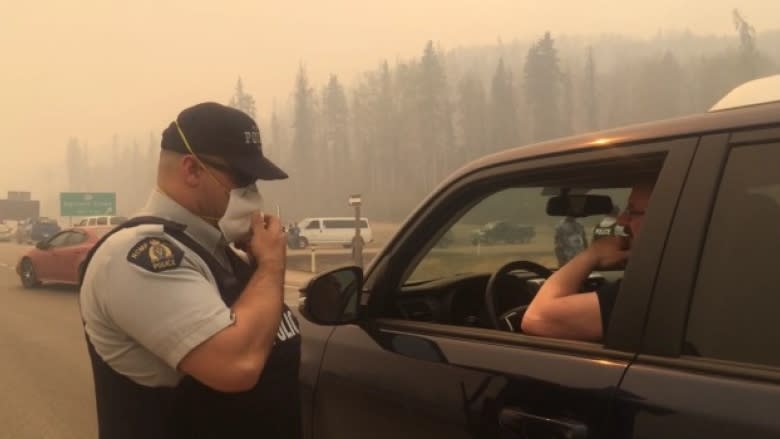Alberta rallies international help for Fort McMurray wildfires
Alberta's fire boss hopes fresh feet at the perimeter of Fort McMurray's massive fire will save some of the province's most valuable assets.
More than 1,000 firefighters from across Canada, the U.S., South Africa and other countries will soon join the roughly 1,200-member fire crew already in Fort McMurray.
Provincial wildfire manager Chad Morrison said his team made the decision to order them up last week — around the time the fires swept to the edges of oilsands sites, forcing a mandatory evacuation of 19 facilities north of Fort McMurray.
Those evacuation orders have since been lifted, but caution continues as flames keep raging and growing.
"This fire is not under control by any means," Morrison said in a news conference Tuesday, when asked if the oilsands are in the clear.
He said there is no immediate threat, but added it's early yet, both in the life of this fire and the fire season in general.
And with no significant rain in two to three months — combined with warm forecast this week — it's going to stay tough.
"There always is that potential," that flames could cross the firebreaks around the Suncor and Syncrude facilities, that firefighters patrol, Morrison said.
"That's why we're investing thousands of resources," he said. "We continue to secure the sites around there. We expect to hold it as best we can over the next coming days."
'Qualified, certified and highly trained'
Morrison called the new crews "qualified, certified, and highly trained" and said they are coming from as far away as Alaska and South Africa.
The North American reinforcements will arrive this week, while some 280 South African firefighters will get here next week.
Their "critical priority" will be securing the oilsand sites in the north, he said.
It's estimated roughly one million barrels per day have been lost due to the fire, which amounts to about half the typical daily output.
Not all of that loss was attributed to threat from fires, but rather loss of workforce. Many oilsands employees are residents of Fort McMurray were evacuated from town.
Lately, dozens of oil workers have reported being evacuated from housing two or three times through a combination of precautionary and mandatory evacuation orders in the north, and the original exodus from the town itself.
Suncor and Syncrude, the two oilsands plants shuttered under mandatory evacuation orders last week, are now working with the province on a phased re-entry plan for some of those employees.
Provincial officials say they're overseeing plans from affected companies, testing air quality and making sure labour regulations are met before staff are allowed to come back.
Re-entry rehearsal
Inside the town, the focus swivels to preparing for the return of evacuees.
It's a process that Scott Long with the Alberta Emergency Management Agency calls "an awful lot of work." And it continues day and night.
This week, they'll run a rehearsal to look more closely at their planning.
"If there's any gaps that we have not thought of, we will quickly address those," Long said.
A detailed booklet telling evacuees what to expect, if they decide to return to Fort McMurray during the voluntary re-entry starting June 1, is now available online.
The province has also made significant progress on basic services.
Restoration of the hospital restarted on Sunday, electricity service has been restored to more 90 per cent of the community, and natural gas have been restored to 99 per cent of homes, outside the worst-hit neighbourhoods of Abasand, Waterways, and Beacon Hill.
Fort McMurray's commercial airport also announced Tuesday it plans to re-open June 10. And the RCMP detachment has now restarted its local office, with the majority of personnel returned.
Weekend rain skips northern flames
The wildfires, which continue to burn out of control, grew over the weekend and have now consumed 522,892 hectares.
Rain and snow that hammered most of the province over the weekend largely skipped the wildfire area.
The Fort McMurray region saw at most 5 mm of rain, compared to the more than 100 mm seen in some parts of Edmonton.
But despite the many challenges, officials found some positive news to share.
Three weeks of warm, dry-as-dust conditions since the fire roared through town, mean even small showers and minor temperature dips seem like big victories.
Morrison said the break allowed crews to finalize 178 km of fire guard around the fire's perimeter.
That fire guard will make it easier for those new support crews to fight the fire on the ground.
Morrison said Tuesday will be another "challenging" day, though he remained, as ever, optimistic.
"We continue to make great progress."



